Planting Trees
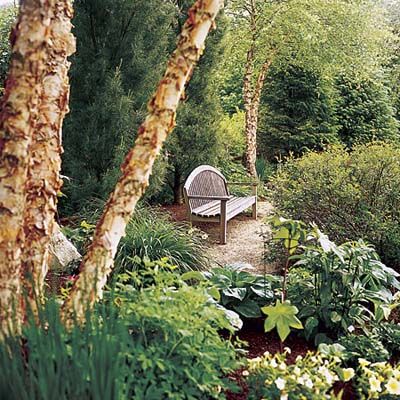
In the woods, nature chooses random places for trees. But in a yard, a more methodical approach is required. The placement of trees determines how well different sizes, shapes, and colors harmonize with one another and flatter your home.
The key to successful treescapes is envisioning the height, diameter, and silhouette of each species in 10 to 20 years’ time. Many homeowners make the mistake of planting young trees without considering how their roots and branches will spread. As the years go by and the trees mature, they crowd one another, and some may have to be thinned. But when trees are positioned properly, they fulfill their mission and provide years of delight.
Shelter
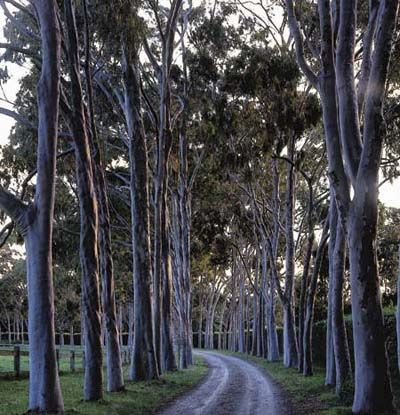
A driveway flanked by two elegant rows of trees is a tradition that dates back to Roman times. Although designed to protect a road from the wind and weather, it also creates an impressive entrance. These lemon-scented gum trees thrive in southern locations, but many column-shaped-types, such as the pin oak or linden, can have a similarly dramatic effect when used in abundance and spaced no more than 20 feet apart.
Canopy
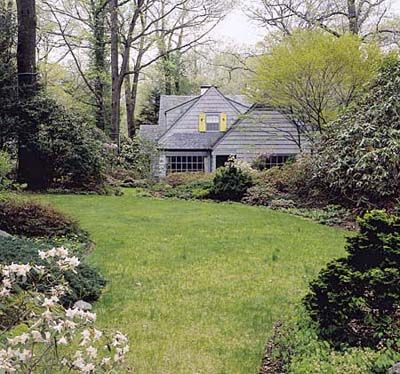
A grove of oaks and maples gives this house in Larchmont, New York, the appealing intimacy of a woodland cottage. Although large deciduous trees take up to 100 years to grow to their mature height, a home built on an undeveloped lot can achieve a canopy effect sooner with careful siting. A rule of green thumbs: Plant each tree as far from a structure as the tree is tall. For example, an elm that is likely to reach 40 feet should be 40 feet from a house. Otherwise, spreading roots can undermine the foundation, and a falling limb may tear through the roof.
Focal Point
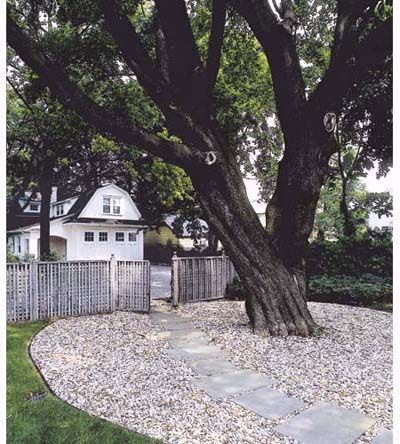
A tree isolated within a moat of shrubs, rocks, pavers, or flowers adds majesty to an otherwise nondescript patch of land. Positioning a single tree or a cluster of dainty white birches in the middle of a circular drive or other island will give it a dramatic centerpiece. You can also landscape to draw attention to an impressive tree. The shallow root system and shade thrown by this Norway maple in Bergen County, New Jersey prevented grass from growing beneath it. The homeowners made a virtue of the problem by setting the tree off with a gravel surround and footpath.
Screen
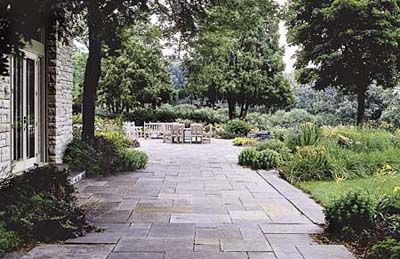
At this suburban house near Madison, Wisconsin, a cluster of sugar maples provides privacy from neighbors more gently than any fence. But because a string of maples planted 40 feet apart might take 20 years to fill out, consider interspersing them with fast-growing poplars. With a lifespan of only 20 or so years, poplars can be removed as the maples mature. For year-round screening, evergreens spaced 12 feet apart will do the job.
Sculpture
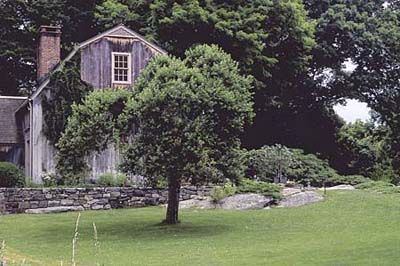
Planted in the right spot, a specimen tree, such as this apple tree in Westchester County, New York, can turn a greenspace into a harmonious composition. When arranging the elements of a landscape, remember that perfect symmetry is not necessary; a tree becomes more compelling if slightly off-center. Balanced by open space, a species can function as a living object of art, particularly if it’s of great stature or if, like a white hickory, it reveals spectacularly gnarled branches in the winter.
Ornament
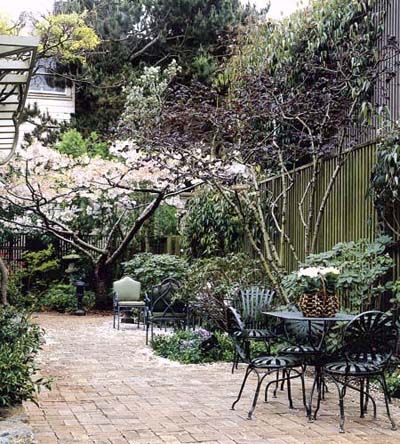
You can plant small ornamental and dwarf varieties as close as 6 feet to a home or patio without worrying about spreading roots. Still, small trees, such as this cherry in a San Francisco courtyard, need pruning to keep branches from brushing up against the house, which could cause mildew and other damage. Typical plantings include dogwood, crabapple, and—for brilliant accent color—exotics such as the Japanese red maple. “But if you’re looking for low maintenance,” says Geiger, “native species are the best because they’re naturally adapted to a particular climate.”
